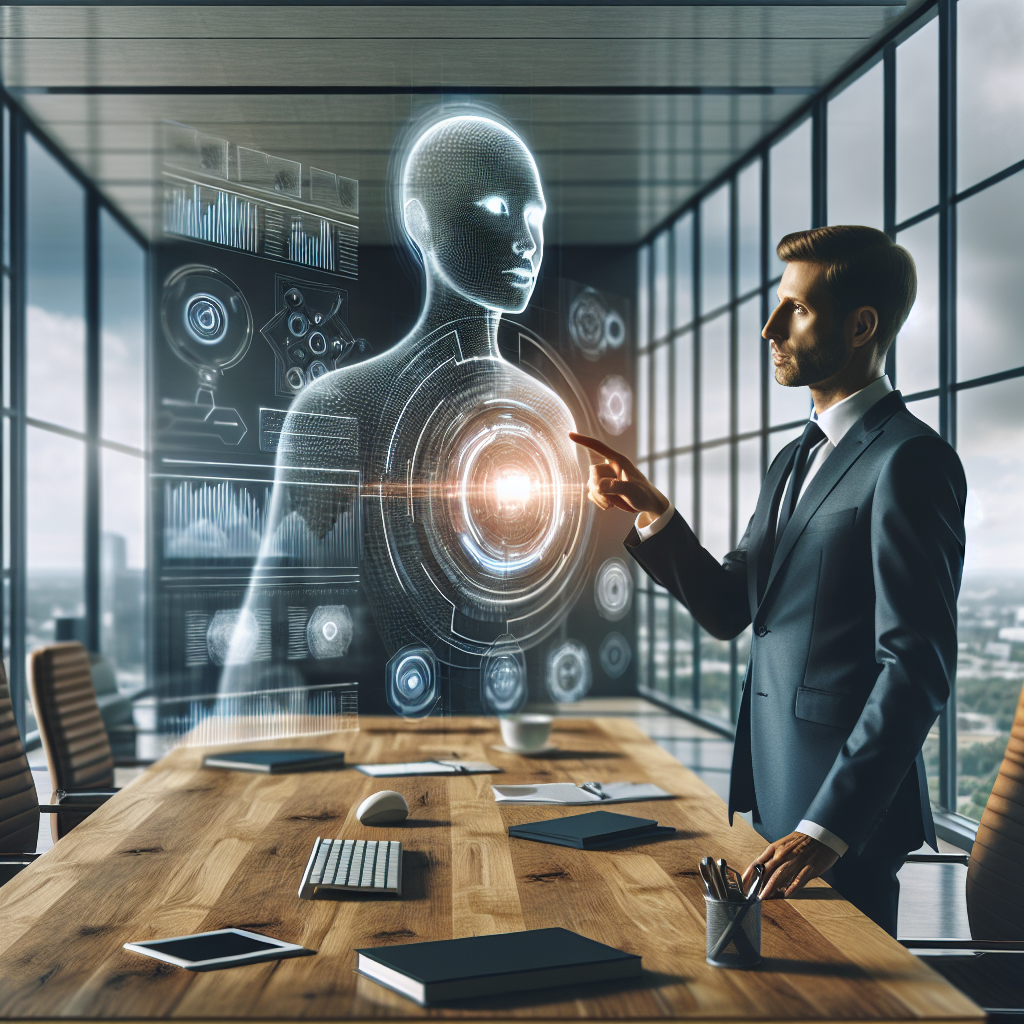
AI Revolution Unleashes New Era of Innovation and Transformation
The world stands at the threshold of a profound technological shift. Artificial Intelligence is no longer just a buzzword. It’s reshaping industries, revolutionizing workflows, and creating new possibilities that seemed like science fiction just years ago.
While many focus on the flashy AI applications we see today, the real revolution lies beneath the surface. The true transformation is only beginning. Let’s explore how AI is quietly changing everything around us and what this means for our future.
Beyond the Hype: The True AI Revolution
ChatGPT captured global imagination when it launched in late 2022. However, the chatbot represents just the tip of a massive technological iceberg. The real revolution isn’t in these consumer-facing applications but in how AI is fundamentally changing business operations and innovation cycles.
AI’s most significant impact comes from its ability to accelerate innovation across all sectors. This technology isn’t simply automating existing processes. It’s enabling entirely new approaches to solving complex problems.
According to McKinsey research, companies deeply invested in AI are seeing up to 20% higher productivity across various functions. This improvement shows how AI goes beyond simple automation, creating new value throughout organizations.
AI’s Transformative Impact Across Industries
The reach of artificial intelligence extends into virtually every sector. Here’s how AI is changing several key industries:
Healthcare Revolution
AI tools now analyze medical images with accuracy matching human specialists. Moreover, they’re accelerating drug discovery by predicting protein structures and potential drug interactions. This acceleration could shrink development timelines from years to months.
For instance, AI systems developed by medical researchers can now detect early signs of diseases like cancer and Alzheimer’s before symptoms appear. This early detection capability is saving countless lives through timely interventions.
Manufacturing Transformation
Smart factories use AI for predictive maintenance, reducing downtime and extending equipment life. Additionally, AI-powered quality control systems can spot defects invisible to the human eye. These improvements boost productivity while cutting costs.
Factory floors now feature collaborative robots working alongside humans. These “cobots” learn from their human counterparts and continuously improve their performance through machine learning algorithms.
Financial Services Evolution
Banks deploy AI for fraud detection, risk assessment, and personalized customer service. Furthermore, trading algorithms process market data in milliseconds, identifying patterns humans might miss. This capability leads to more informed investment decisions.
Fintech companies use AI to expand financial access to previously underserved populations. Their algorithms assess creditworthiness using alternative data sources when traditional credit histories aren’t available.
The Productivity Revolution Has Arrived
AI’s most immediate impact appears in workplace productivity. Knowledge workers across industries report significant time savings from using AI assistants for various tasks.
- Content creators use AI to generate first drafts and edit their work
- Programmers employ AI coding assistants to write and debug code faster
- Marketers leverage AI for data analysis and campaign optimization
- Customer service teams deploy AI chatbots to handle routine inquiries
These productivity gains aren’t just incremental improvements. They represent a step-change in how knowledge work gets done. Tasks that once took hours now take minutes. Projects that required weeks now finish in days.
Recent studies show that workers using AI tools consistently complete tasks 40-60% faster than those without AI assistance. This efficiency boost allows professionals to focus on higher-value work requiring human creativity and judgment.
The Innovation Acceleration Engine
Perhaps AI’s most profound impact comes from its ability to accelerate innovation cycles. AI doesn’t just help us work faster—it helps us create better solutions more quickly.
Traditional innovation often follows a linear path: research, prototype, test, refine, and release. AI transforms this process through rapid simulation and testing of thousands of potential designs or solutions simultaneously.
Scientists at pharmaceutical companies now use AI to simulate molecular interactions without physical lab work. This capability allows them to test drug candidates virtually before synthesizing the most promising options. The result? Drug discovery timelines shrink dramatically.
Similarly, engineers use AI to rapidly explore design alternatives for everything from microchips to aircraft components. The technology can generate and evaluate thousands of possible designs against multiple constraints and requirements.
The Democratization of AI Capabilities
Until recently, advanced AI capabilities remained exclusive to tech giants with massive resources. Today, these powerful tools are becoming accessible to organizations of all sizes through cloud-based services and open-source projects.
Small businesses now access enterprise-grade AI through affordable subscription services. This accessibility allows them to compete with larger companies by leveraging similar technological capabilities.
Individuals without coding expertise can now build custom AI solutions using no-code platforms. These tools provide intuitive interfaces for creating AI applications without deep technical knowledge.
This democratization creates a more level playing field. Great ideas can come from anywhere, not just well-funded research labs or tech conglomerates.
Navigating the Challenges Ahead
Despite its tremendous potential, AI’s rapid advancement brings significant challenges. Addressing these issues thoughtfully will determine whether AI’s benefits spread widely throughout society.
The Skills Gap
As AI transforms work, the skills needed in the workplace are changing rapidly. Many workers fear being left behind as their current skills become less relevant.
Businesses must invest in reskilling programs to help employees adapt. Additionally, educational institutions need to update curricula to prepare students for an AI-enhanced workplace.
The good news? AI tools themselves can help with this transition by making learning more personalized and accessible.
Ethical Considerations
AI systems reflect the data used to train them. This reality means they can perpetuate existing biases or make decisions without sufficient transparency.
Responsible AI development requires diverse teams and careful consideration of potential impacts. Moreover, regulatory frameworks must evolve to address new challenges while not stifling innovation.
Organizations leading in AI adoption increasingly recognize the importance of ethical guidelines. They’re implementing governance structures to ensure AI systems align with human values and societal goals.
Data Privacy and Security
AI systems require data to function effectively. This requirement raises important questions about data ownership, privacy, and security.
Companies must balance data collection needs with robust privacy protections. Furthermore, AI systems themselves become potential targets for cybersecurity attacks, requiring new defensive approaches.
Emerging technologies like federated learning offer promising solutions. These approaches allow AI models to learn from data without moving sensitive information to central servers.
The Path Forward: Human-AI Collaboration
The most successful AI implementations don’t replace humans—they enhance human capabilities. This collaborative approach combines AI’s computational power with human creativity, empathy, and judgment.
Doctors use AI diagnostic tools but make final treatment decisions based on patient preferences and unique circumstances. Similarly, judges may use AI risk assessment tools but apply human judgment to individual cases.
Companies fostering effective human-AI collaboration typically see better results than those seeking to simply automate away human roles. The most valuable AI systems amplify human strengths rather than attempting to replicate them.
Preparing for an AI-Enhanced Future
How can individuals and organizations prepare for this rapidly evolving landscape? Several strategies stand out:
- Develop an experimental mindset. Try different AI tools to understand their capabilities and limitations.
- Focus on uniquely human skills like creativity, ethical reasoning, and interpersonal communication.
- Invest in continuous learning to stay current with evolving technologies.
- Consider how AI might transform your industry and position yourself accordingly.
- Engage with ethical questions surrounding AI development and deployment.
The organizations that thrive will be those that view AI as a partner in innovation rather than just a productivity tool. They’ll reimagine their processes and business models to leverage AI’s unique capabilities.
Conclusion: The Revolution is Just Beginning
We stand at the early stages of AI’s transformative impact. The applications we see today represent just the first wave of innovation. As AI capabilities continue to advance and spread throughout the economy, we’ll witness changes comparable to previous technological revolutions.
Like the introduction of electricity or the internet, AI will eventually become an invisible but essential part of how we work and live. The most profound impacts often come not from the technology itself but from how we reorganize our societies and economies around its capabilities.
The real AI revolution isn’t about replacing humans—it’s about expanding human potential. By embracing this technology thoughtfully, we can create a future where AI helps us solve our most pressing challenges and create new possibilities for human flourishing.
Are you ready to join the revolution?


